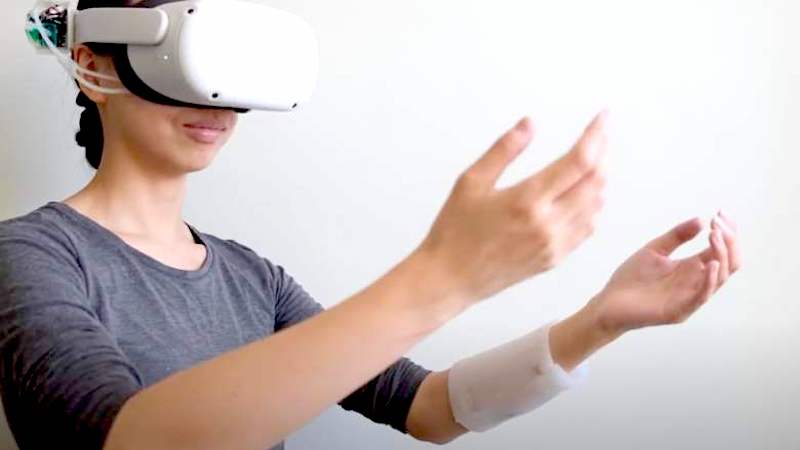After sight, hearing, touch: Computer researchers set up haptic sensors to feel virtual reality on the skin.

To fully immerse yourself in the world of virtual reality, Seeing and hearing through a virtual reality headset is not enough. Researchers at the Human Computer Integration Lab, a computer lab at the University of Chicago, have revealed in a study what could be The future development of virtual reality : chemical sensors Which transmit sensations directly to the skin.
ALSO READ> PS5 PSVR: Its VR headset is expected for 2022
Silicone virtual reality patches release harmless chemicals on the skin
To simulate the sense of touch as well as sight and hearing in a fully digital world, these researchers developed Virtual Reality Devices (related to the sense of touch). This applies chemicals to the skin Create stimuli related to perceived effects in the virtual world.
A less advanced but well-known type of tactile material These are the shakers that you can have in your smartphone or video game consoles. It allows you to feel sensations through touch without making a sound – thus passing key information through the sense of touch. Nintendo was the first to introduce shakers in 1997, with the Nintendo 64 Rumble Pak. And this year we learned that Netflix’s first video game with Oculus could also be a virtual reality game.
Tangible virtual reality: Five chemicals that trigger five sensations on the skin
Today, it is possible to vibrate a VR headset or a pair of VR controllers. But even that is not enough to reproduce in a digital world All the subtlety of sensations that can be experienced in real life. US researchers are currently working on silicone patches that can be applied Almost anywhere on the skin: arms, legs, even the face. These patches can release five different (and of course harmless) chemicals onto the surface of the skin.
This method, which is called chemical touches, Thus, it produces five unique physical sensations : a feeling of coolness thanks to menthol, heat thanks to capsaicin (one of the components of hot pepper). There is also numbness and tingling sensations in the program. With these patches not yet marketed, We are still far from the full VR mix Ready player one, directed by Steven Spielberg in 2018. But it’s another step towards more immersive virtual reality in the coming years.
Read also > Facebook invents reverse virtual reality, what is its purpose?
Source : Human-computer integration lab

“Certified gamer. Problem solver. Internet enthusiast. Twitter scholar. Infuriatingly humble alcohol geek. Tv guru.”




